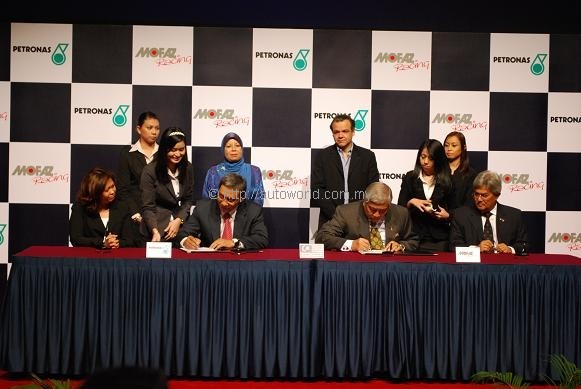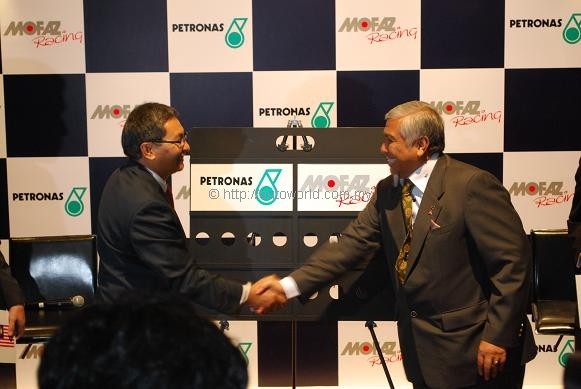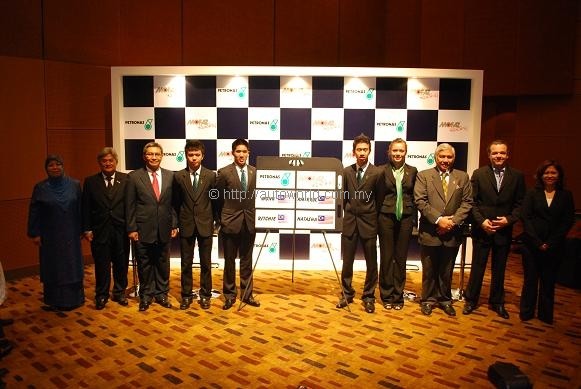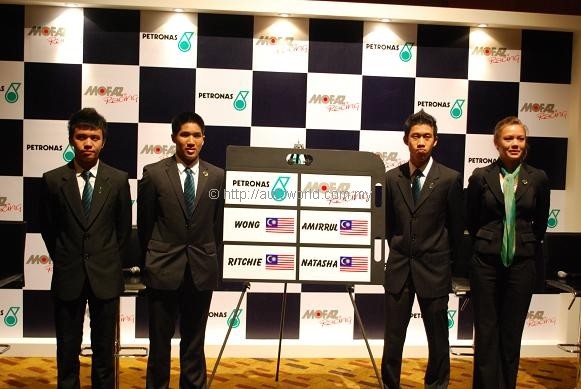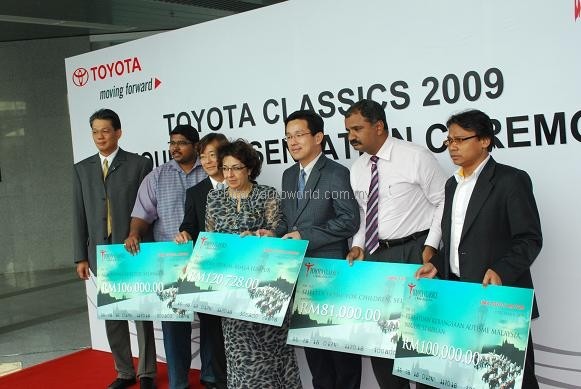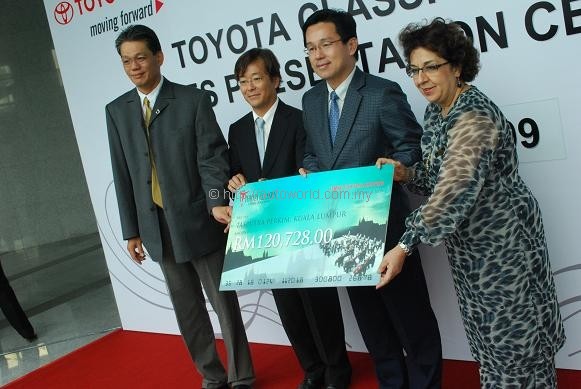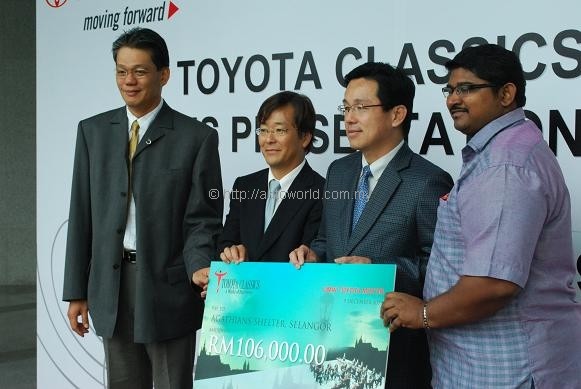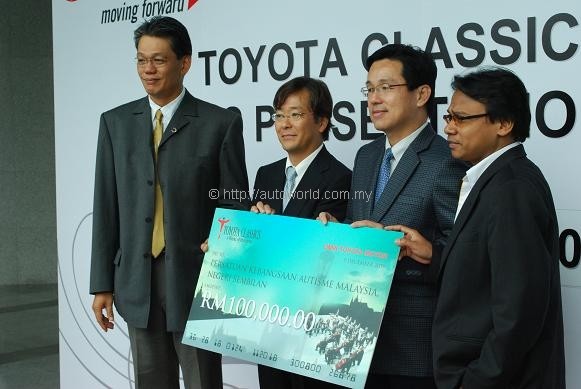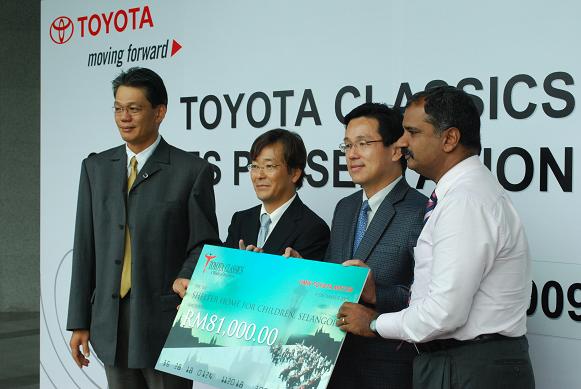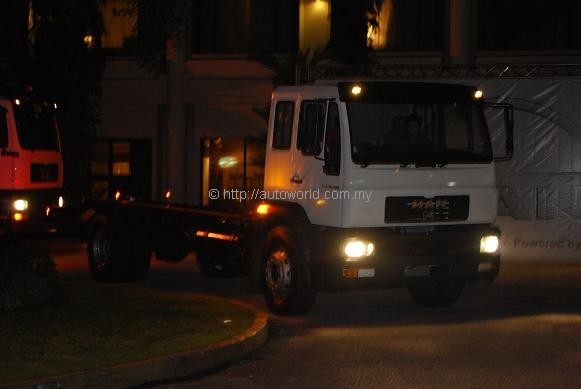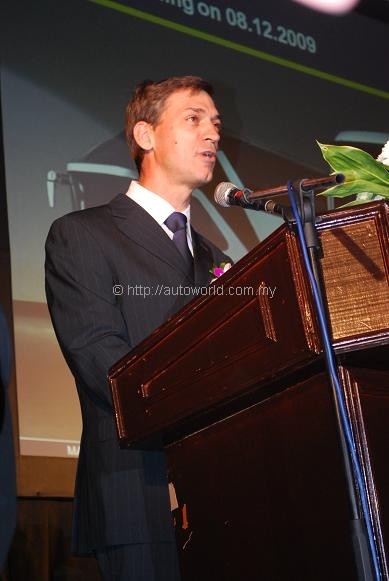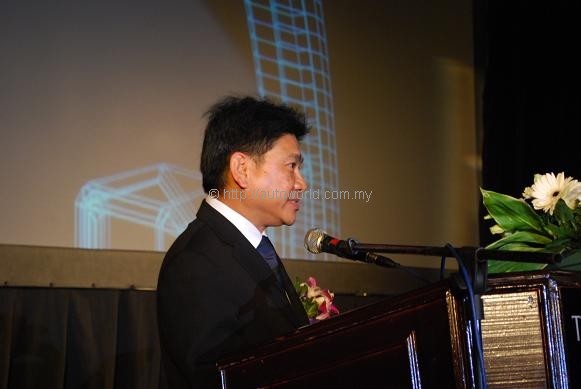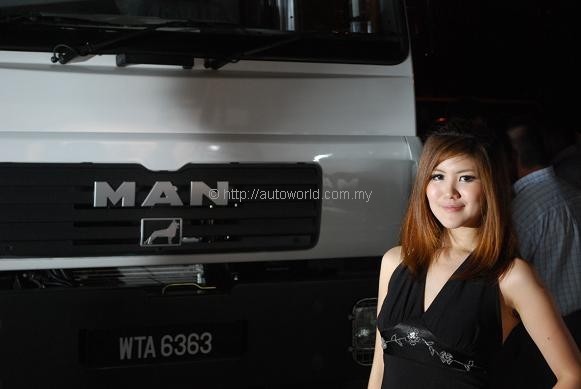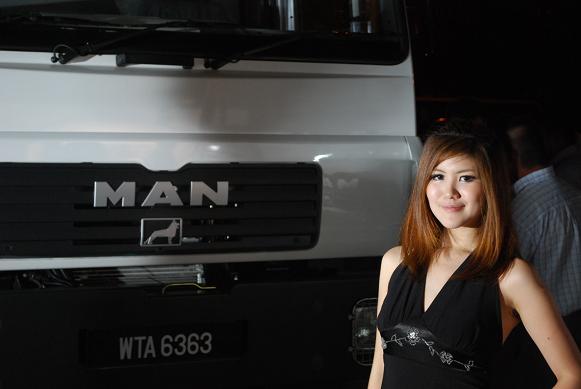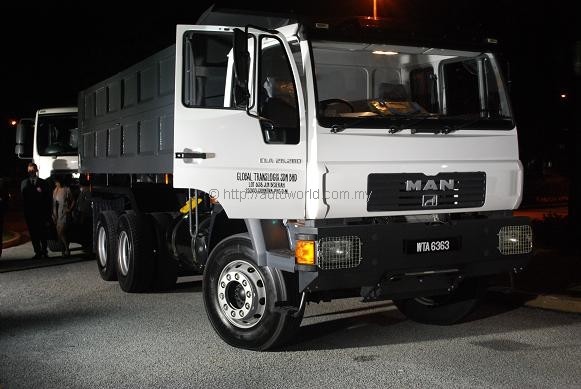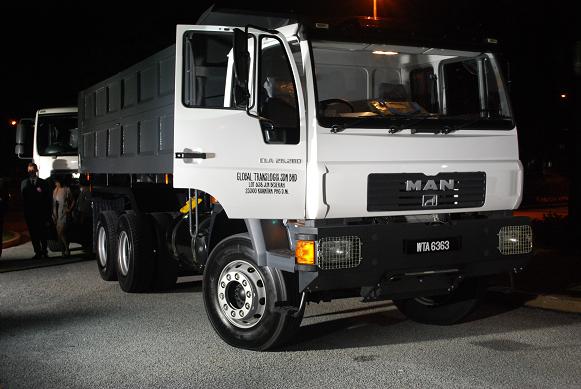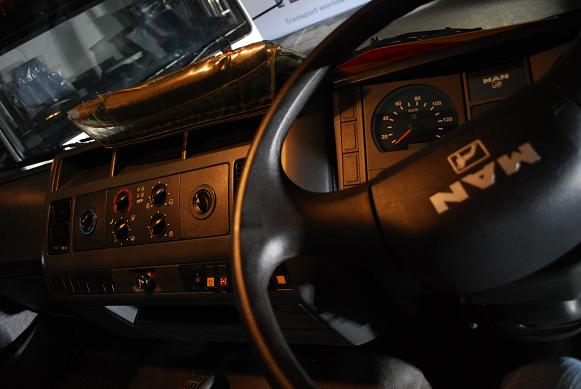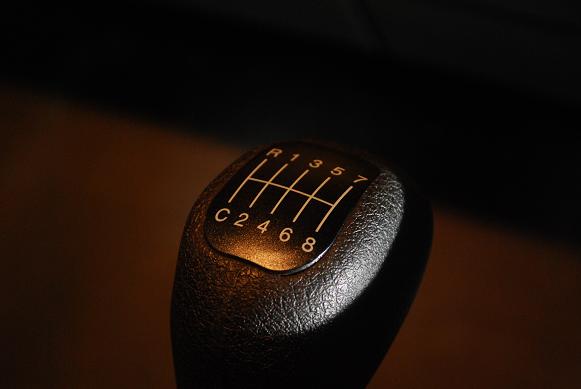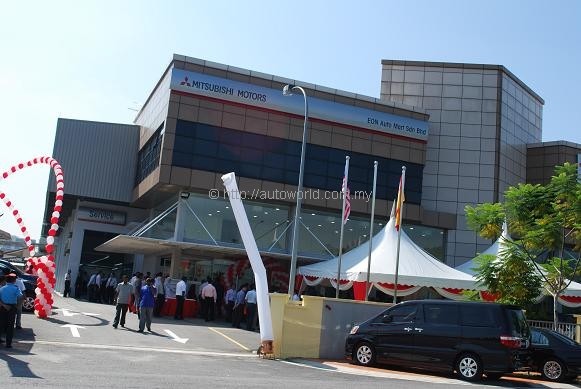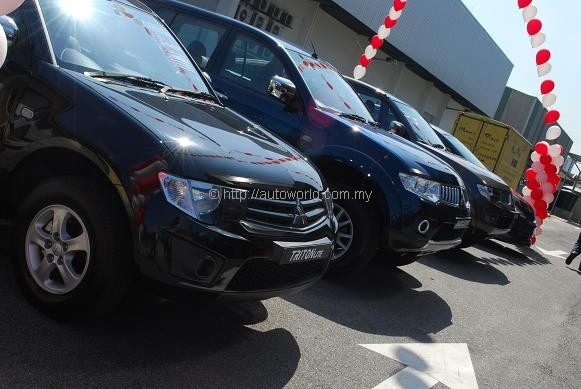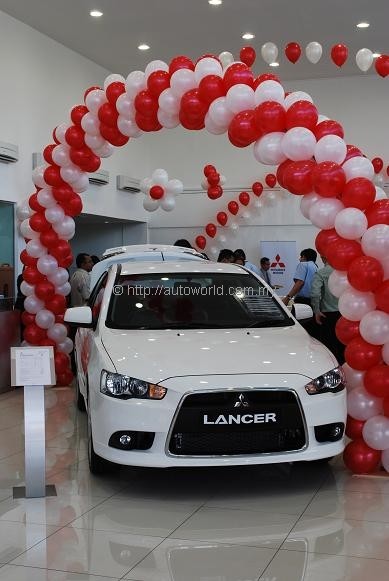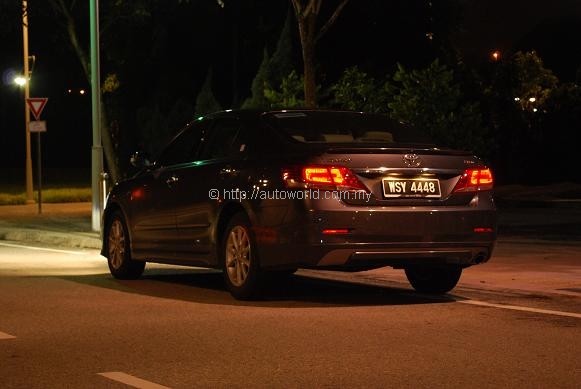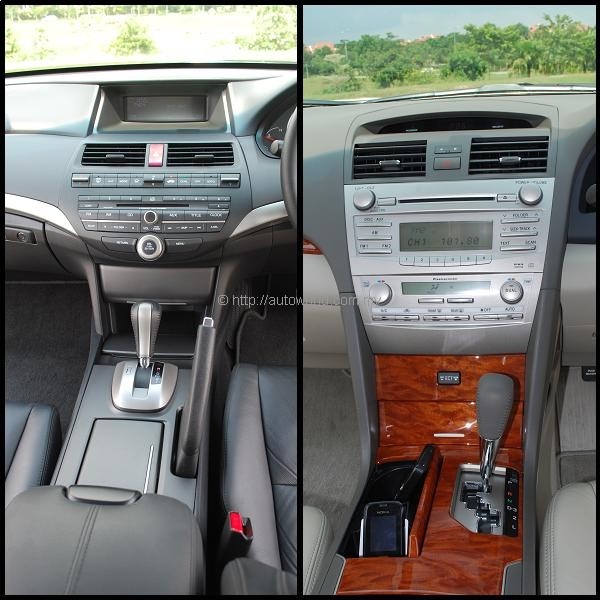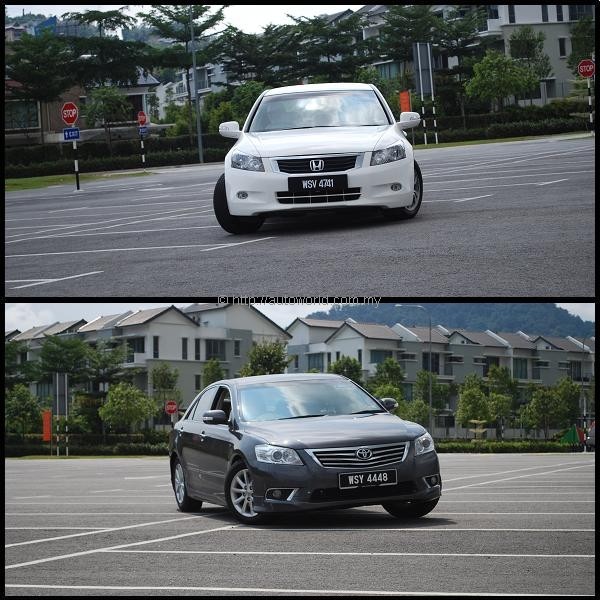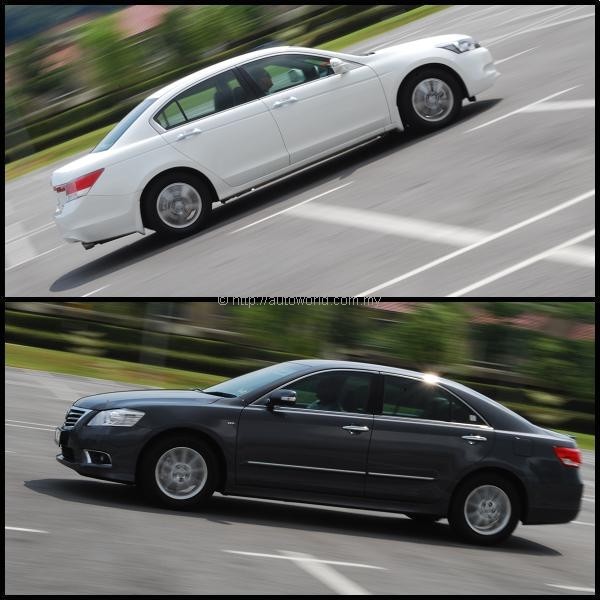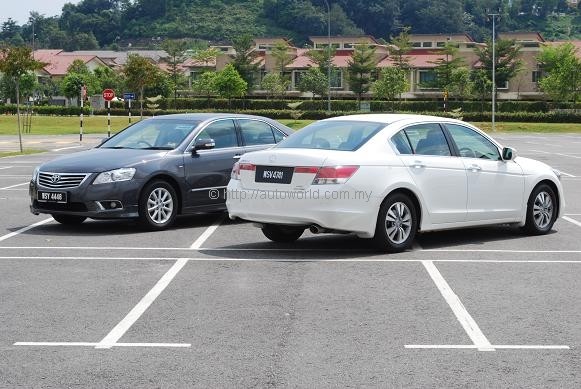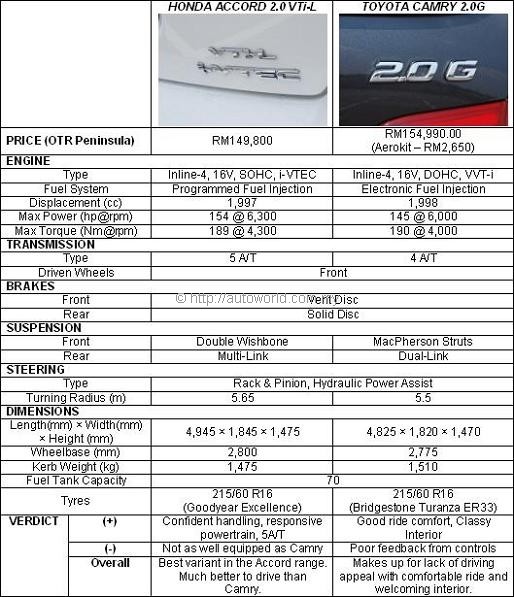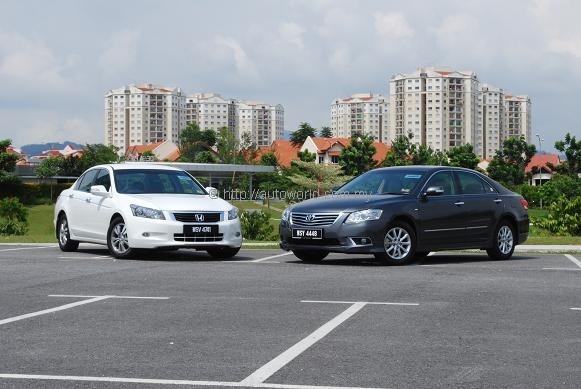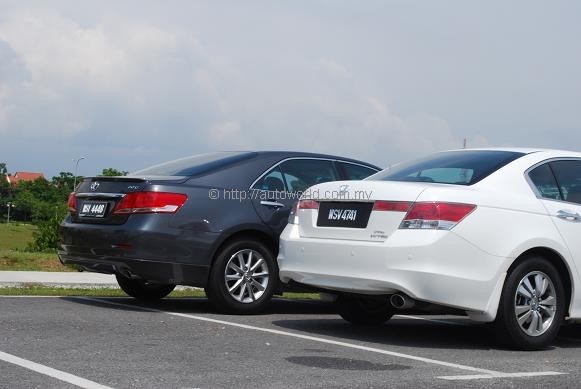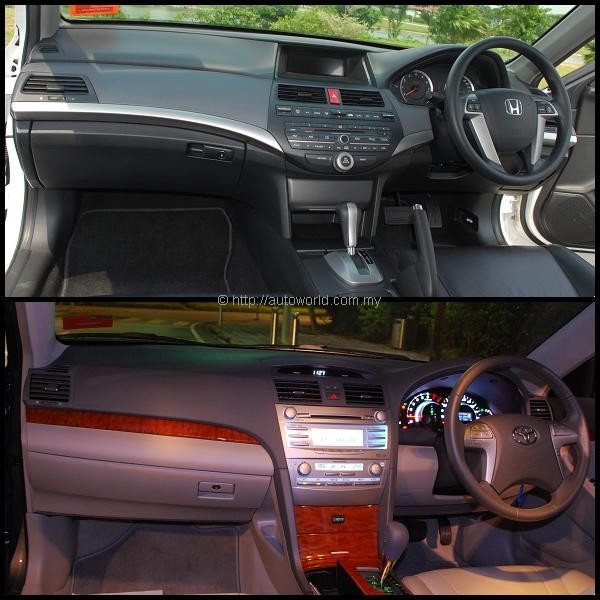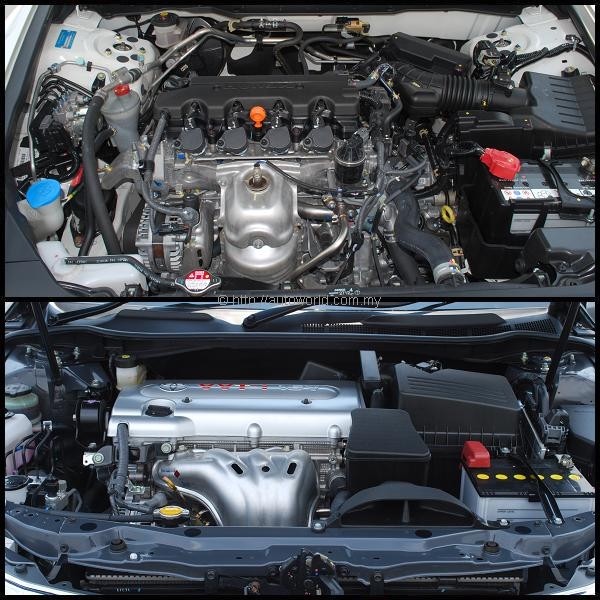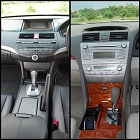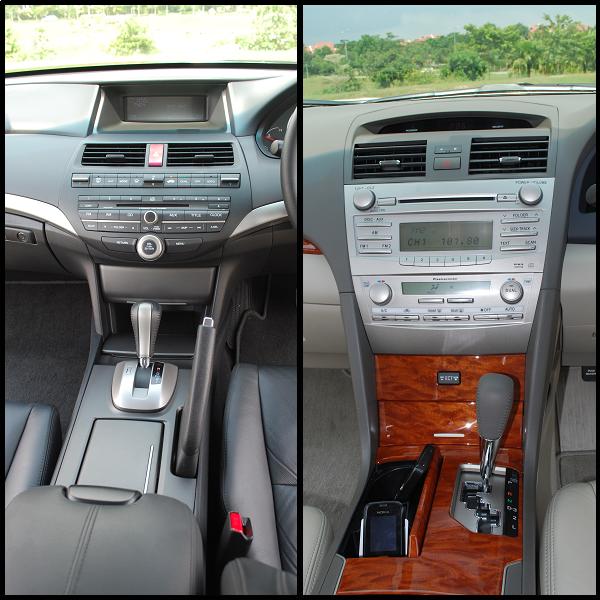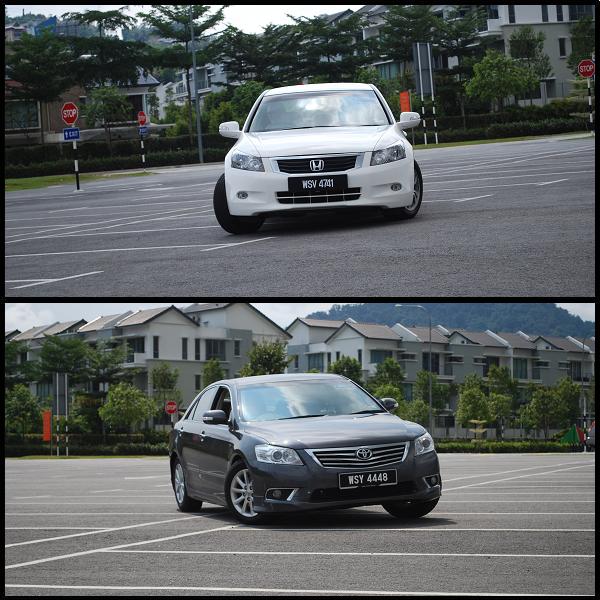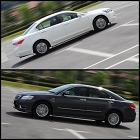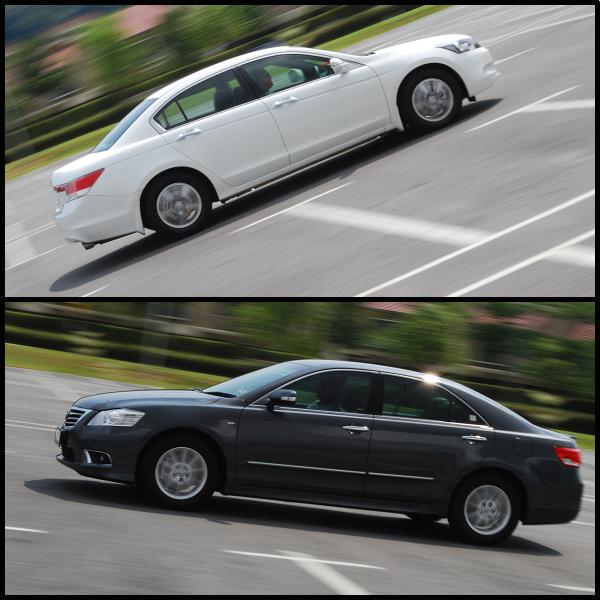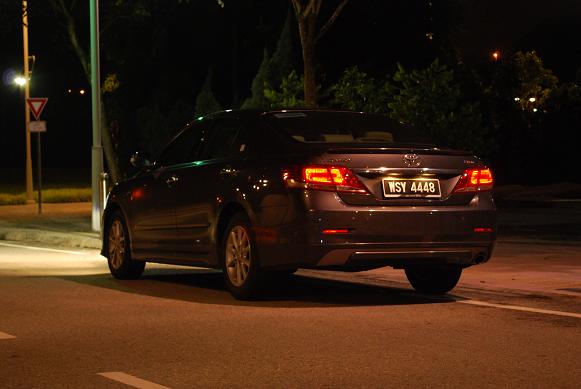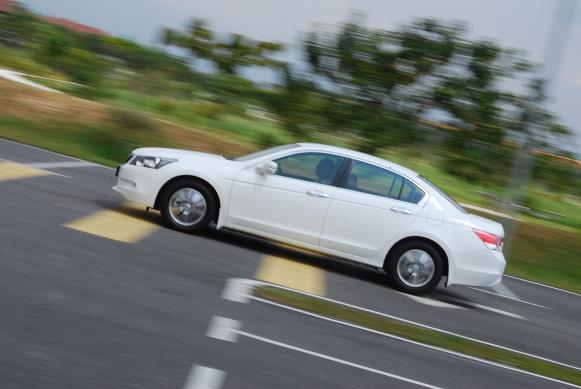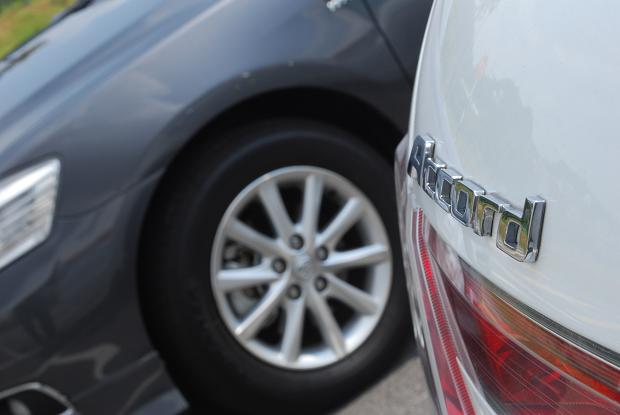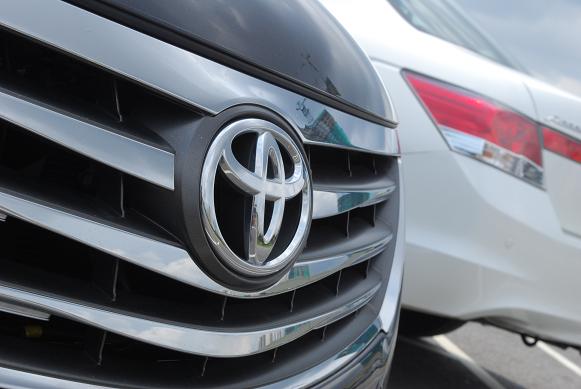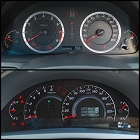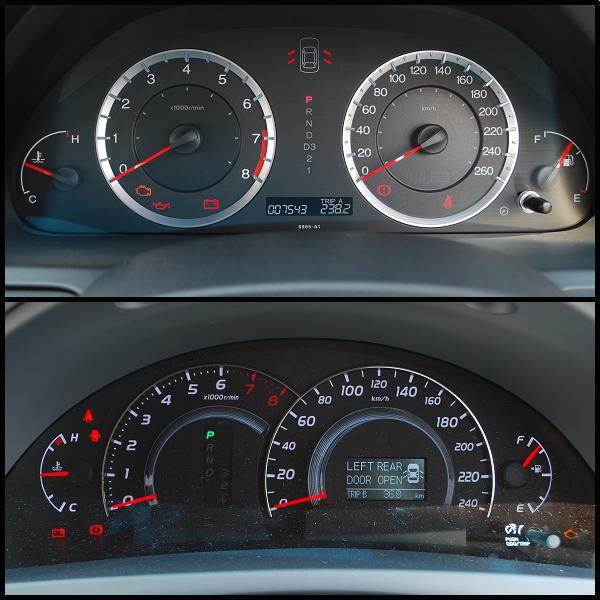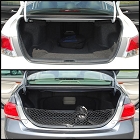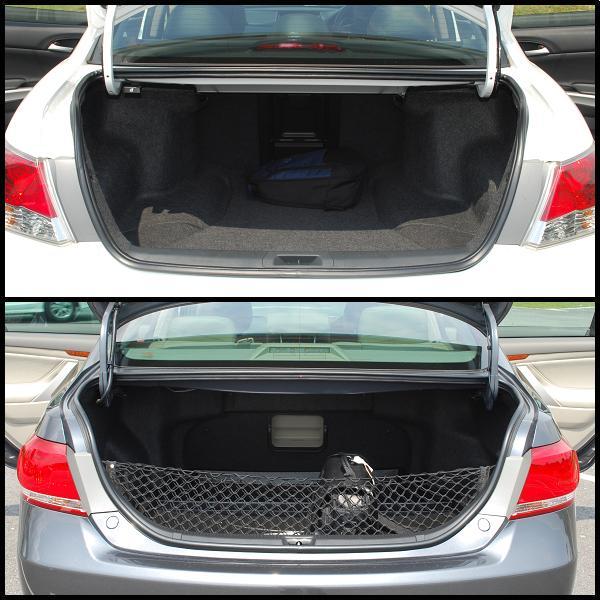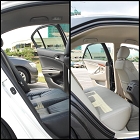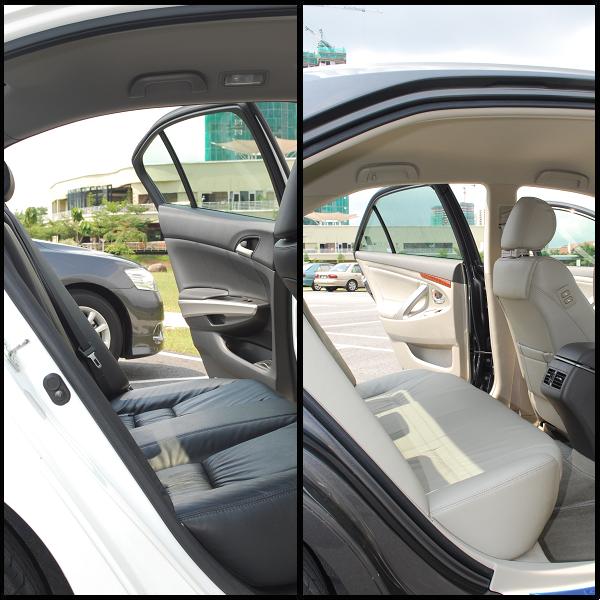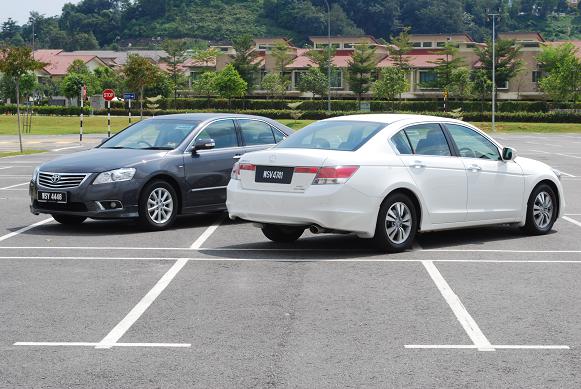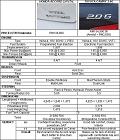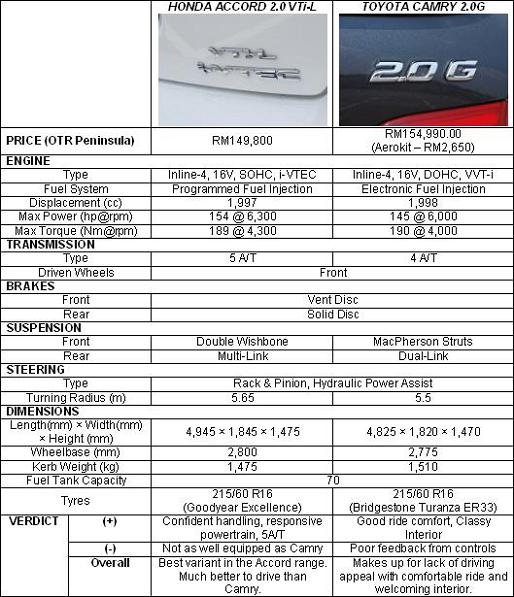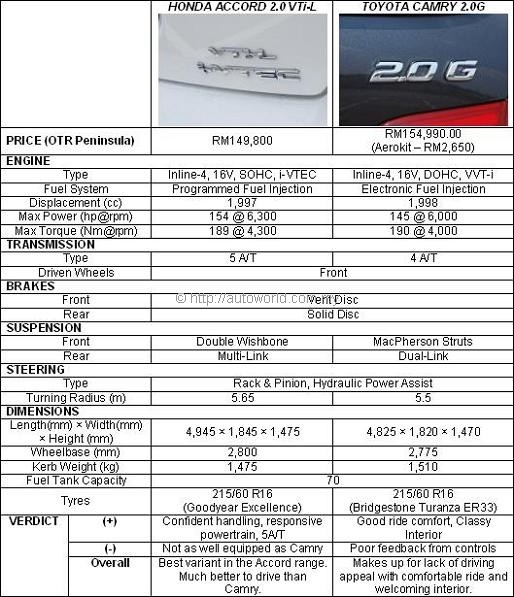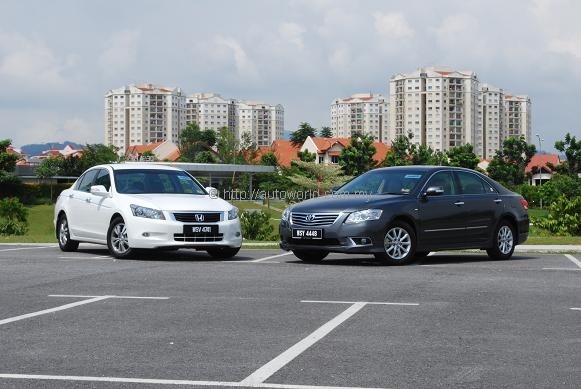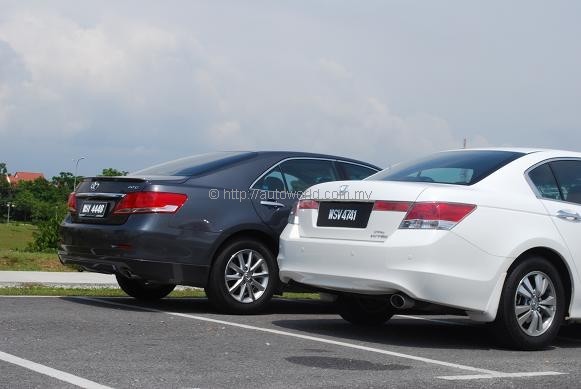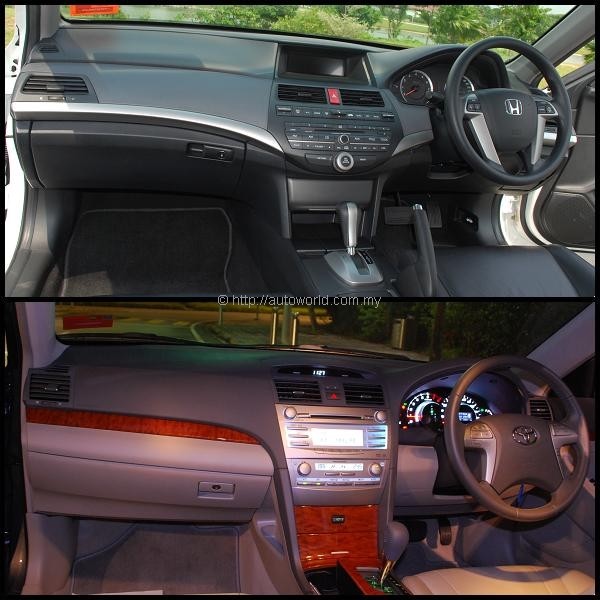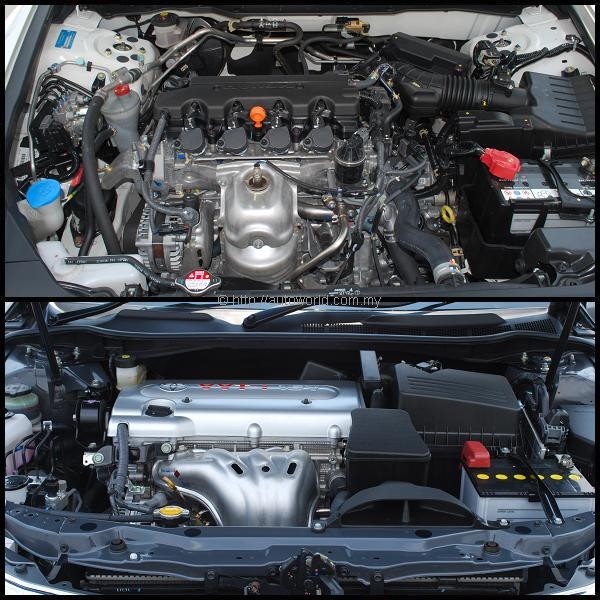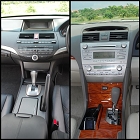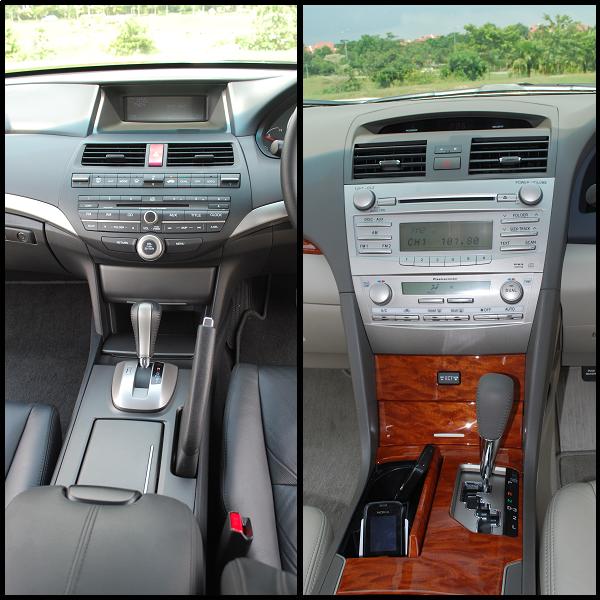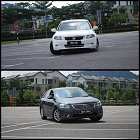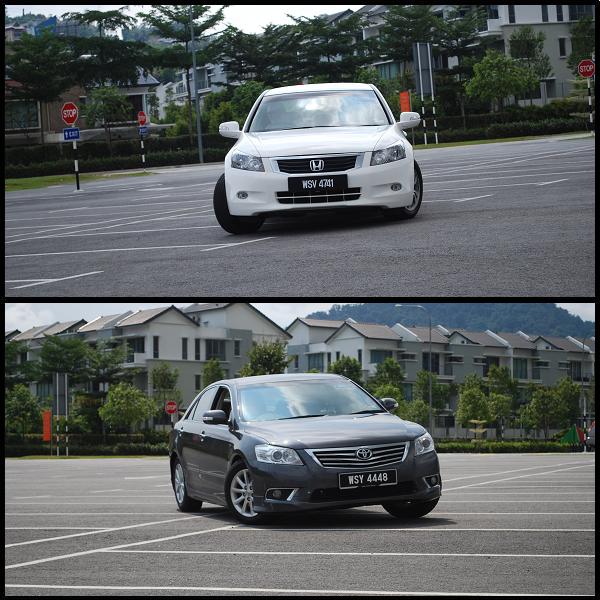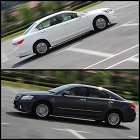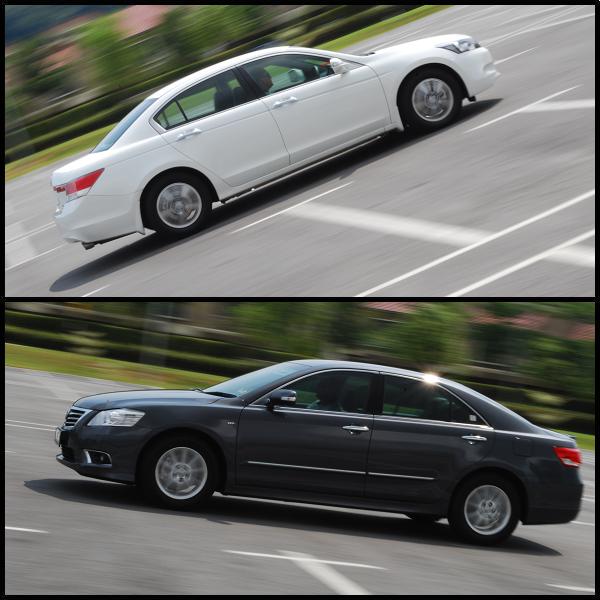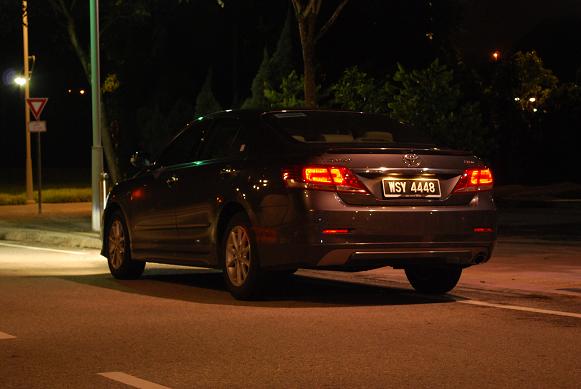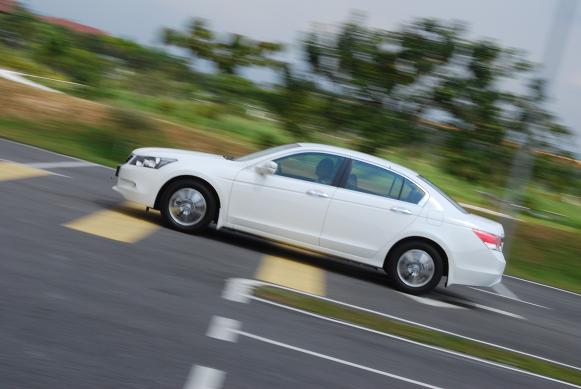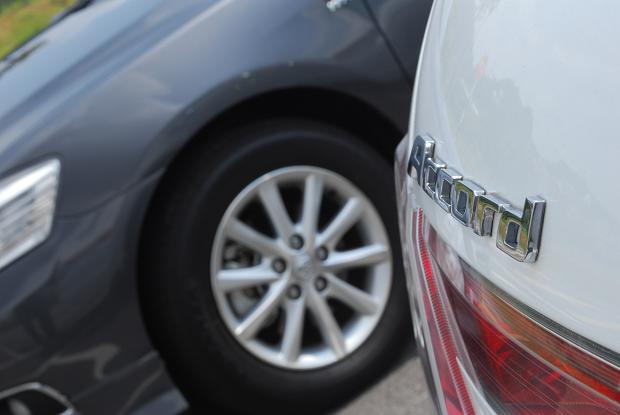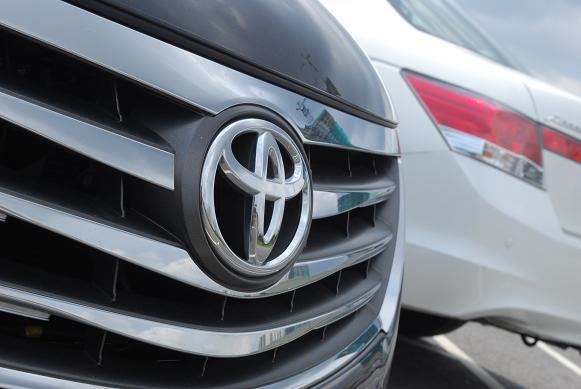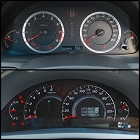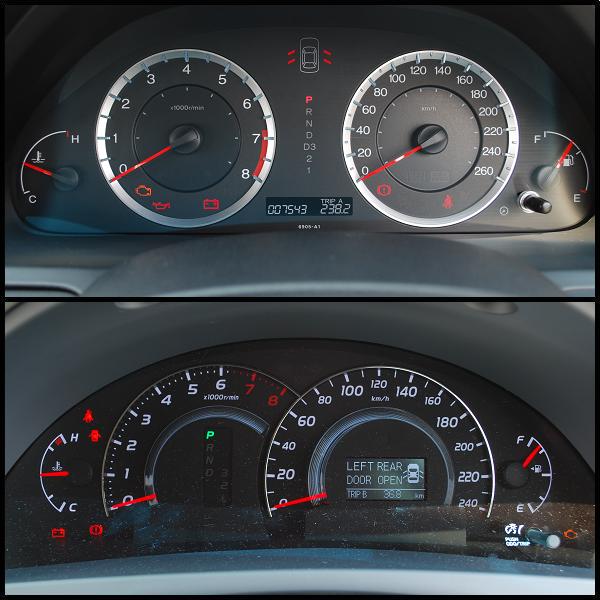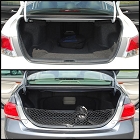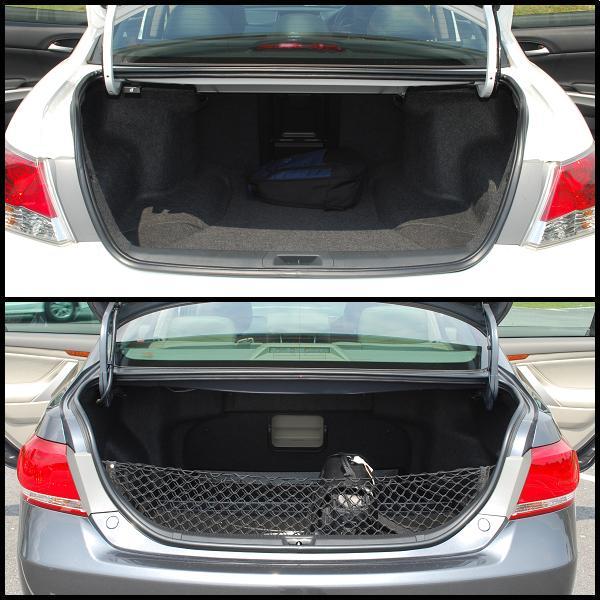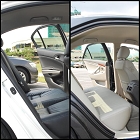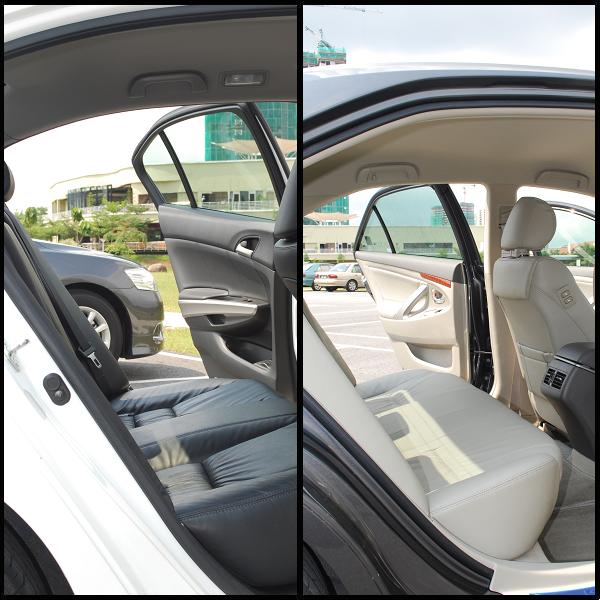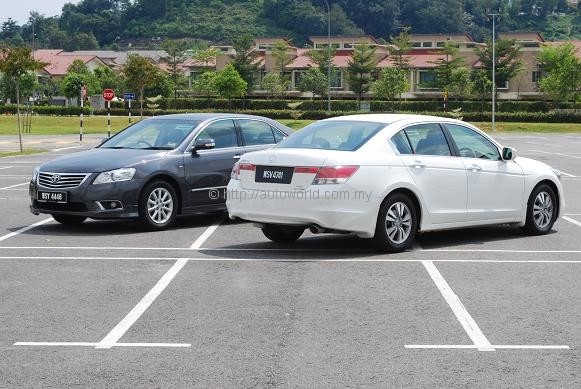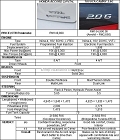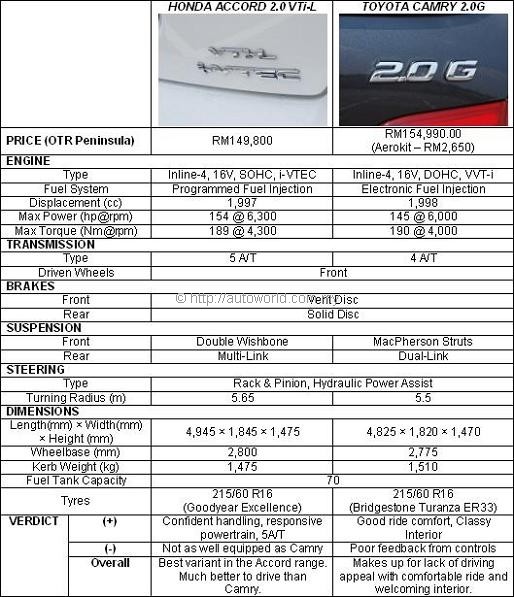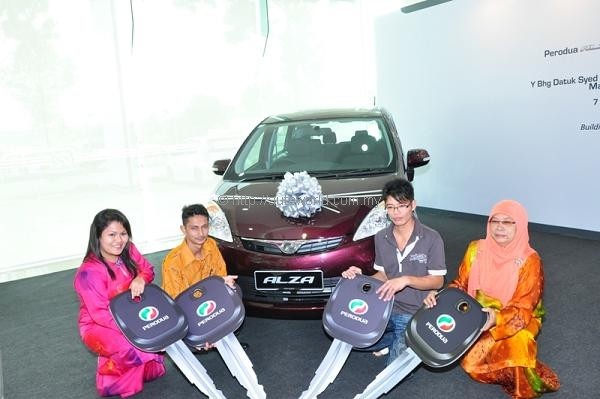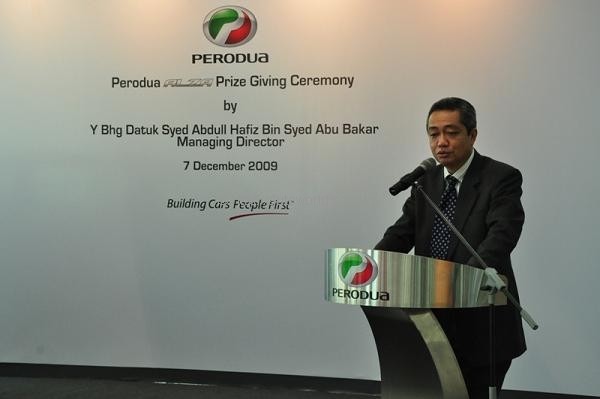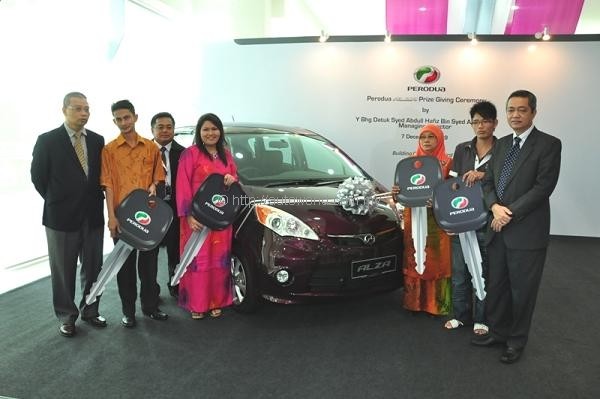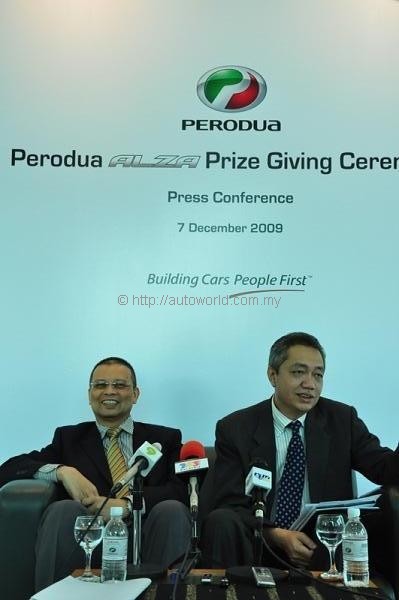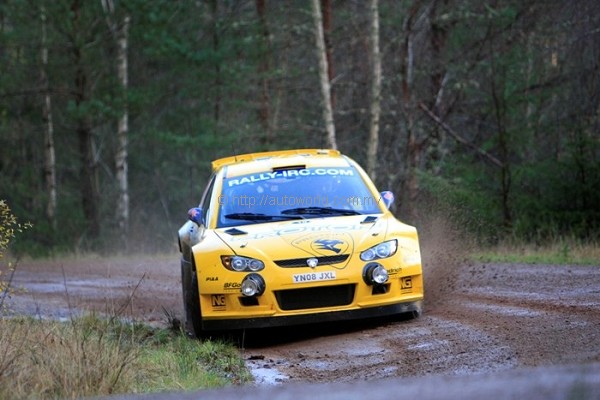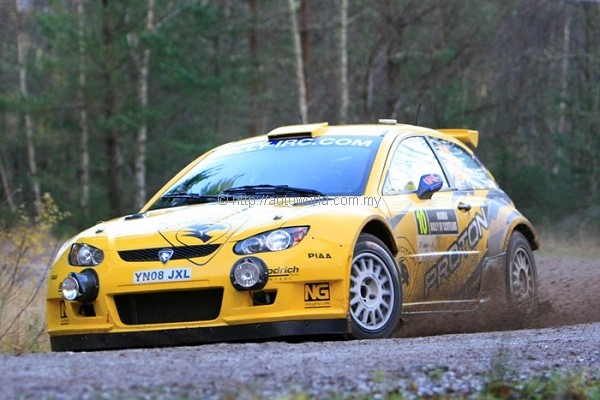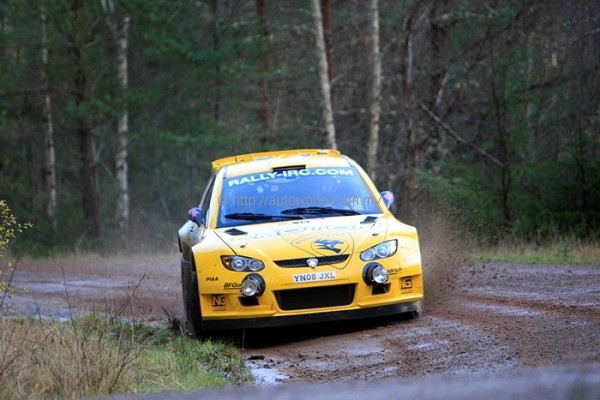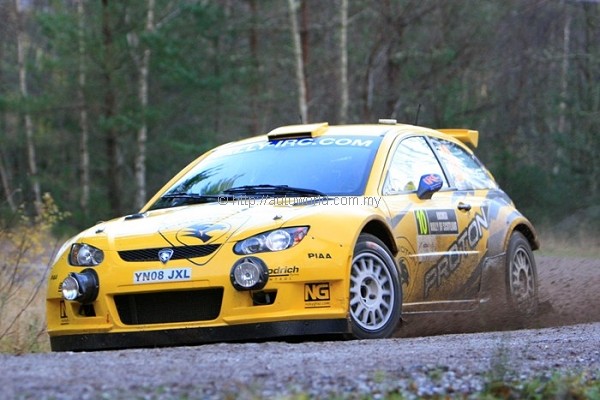As far as the Honda-Toyota rivalry goes, the arena in which the two giants contest each other most fiercely, at least in this part of the world, is the D-segment, where the Accord and Camry do battle. Nissan’s withdrawal of the Cefiro has allowed the duo to exert an almost unshakable dominance over its rivals.
While the Ford Mondeo’s impact on this segment remains to be seen, credible alternatives in the form of the Hyundai Sonata, Peugeot 407 and Mazda6 have yet to adversely impact the iron-clad grip of what one of our forummers dub the ‘Cam-Cord’ duopoly.
The simple fact is that when it comes to buying a large sedan with a budget in the region of RM150k, the Accord and Camry are the two main (sometimes, only) choices that spring to mind. Even if rivals offer superior products, almost none can beat the brand power, residual values, sales and service network which both Toyota and Honda have tirelessly built over the years.
Our national automotive policies have somewhat skewed the market, and along with it, the tastes and requirements of the Malaysian motorist. With some cars costing as much as houses, buying one is not an exercise which most Malaysians can indulge in with abandon. As a result, car buyers in this country are very sensitive to finance-related issues such as resale value, fuel consumption, and maintenance costs. So, while many may lust for the likes of the Alfa 159, BMW 3-series, Audi A4, or Mercedes C-class, come buying time, most end up signing on Honda or Toyota’s dotted lines.
Accord vs Camry – The Big Picture
Discounting the Accord 3.5 V6, which is essentially an RM250k niche product, the Accord vs Camry battle is fought on three fronts – the entry level variants (2.0 VTi vs 2.0E), the mid-spec variants (2.0 VTi-L vs 2.0G), and the full-spec variants (2.4VTi-L vs 2.4V). It is worth noting that each variant of the Accord undercuts the equivalent Camry’s price by a few thousand ringgit.
Honda did not originally have a direct competitor for the mid-spec Camry 2.0G, offering the Accord in only two trim levels – 2.0 VTi and 2.4 VTi-L. However, they were finally persuaded earlier this year to plug the RM30k gap between the 2.0 and the 2.4 with a new 2.0 VTi-L variant. Priced RM8k above the 2.0 VTi, the 2.0 VTi-L brings the 2.0 much closer to the 2.4 spec-level at a fraction of the price.
Two months down the road, Toyota responded by refreshing the entire Camry range, around since late 2006. Technically unchanged, the new-look Camry instantly comes across as a classier and more refined car than its predecessor. It offers the same three variants as before – 2.0E, 2.0G and 2.4V.
From data provided to us by MAA, this year, the Camry has outsold the Accord by some 1,651 units from January to October 2009 (6,900 vs 5,249). The best selling Camry is the 2.0G, with 3,258 units accounting for nearly half of the model’s Jan-Oct 2009 sales.
Meanwhile, for the Accord, the base model 2.0 VTi accounts for the dominant proportion of sales with 2,546 units (49%) sold in the same period. However, it is worth noting that the new 2.0 VTi-L variant, launched in late July has quickly amassed 1,153 sales in three months. If averaged over the number of months the respective models had on the market, the 2.0 VTi-L works out to the best seller in the Accord range.
The hottest battle field between the two cars, therefore, takes place in the middle grounds, where the Accord 2.0 VTi-L is pitted against the Camry 2.0G. Now the volume sellers of their respective ranges, these two also appear on paper, the most balanced variants among their siblings. After much cajoling to both sides, I managed to procure a test unit of each car and pit them against each other in a battle royale.
Losing 400ccs
In many countries, the Camry and Accord model ranges start from the 2.4-litre variants and slowly move up to three-litre-plus v-sixers. Our displacement-unfriendly road tax regime means that the 2.4 versions now assume the flagship role while the smaller 2.0-litre variants serve to bring up sales volumes.
Neither the VTi-L nor the 2.0G loses a great deal in terms of equipment to their 2.4 siblings. For the Accord, opting for the 2.0 VTi-L over the 2.4 VTi-L saves you RM22k, but you have to do without the front strut bar, leather wrapped steering wheel, paddle shifts, side airbags, VSA, and auto leveling HID headlights. Deal breaker? Unlikely, you still get leather seats, power adjusting driver seat, and cruise control, items omitted from the 2.0 VTi.
For the Camry, the downgrade from 2.4V to 2.0G entails less sacrifice of equipment. You only lose the keyless start, steering wood grain finish (which we much rather omit!), traction control, and VSC. Your savings would be less than that of the Accord, but you still have an extra RM20k to pocket for forgoing the extra 400 cubes.
Looking at the bells and whistles alone, the Accord starts the contest at a disadvantage. Its equipment deficit against the Camry makes a sizable list – auto-leveling HID headlights, power adjusting passenger seat, trip computer, intermittent variable wipers, and forward parking sensors.
While it loses out in terms of features & equipment, the Accord quickly hits back in the technical half of the specs sheet. Compared to the Camry’s, the Accord’s powerplant, drivetrain, and chassis all boast greater levels of sophistication and technical trickery.
Powering the Accord is the 1,997cc R20A SOHC i-VTEC powerplant dispensing 154hp @ 6,300rpm and 189Nm @ 4,300rpm. The Camry meanwhile, gets the 1,998cc 1AZ-FE twin-cam VVT-i motor, which produces less horsepower than the Honda (145hp @ 6,000rpm) but slightly more torque (190Nm @ 4,000rpm). Evenly matched on paper.
However, in the transmission department, Honda has come up trumps as the Accord gets a five-speed automatic transmission against the Camry’s four-speeder. The difference is even more pronounced when the Toyota’s unit does not even have an overdrive ratio, whereas the Honda has two.
Both cars feature all-round independent suspension, with the Accord having the superior suspension setup, double wishbones up front and multi-links behind. Toyota opted to go for a simpler set up, strutting the front with MacPhersons and using an uncomplicated dual-link suspension behind.
The Asian market’s obsession for size is also set to benefit the Accord. It is taller, wider and also longer than the Camry. The Accord’s wheelbase is also longer, but it weighs less than the Camry (1,475kg vs 1,510kg).
On paper comparisons favour the Accord. Despite being down on equipment against the Camry, the Accord has the more impressive technical bits and has a lower price tag to go with it. The Accord starts as the favourite. So, bring in the contestants.
The Test Cars
Honda’s test car for the Accord 2.0 VTi-L is a five month old unit registered specially for media testing. It is Honda Malaysia’s only demo car for that variant, and thus, has changed quite a few hands (i.e. well run-in), having clocked 7,311km on the odometer when I picked it up.
At the ‘Driving: The Honda’s DNA’ event in Sepang during the previous week, this car was assigned to the track course, which meant it went through a whole day of high-revving and hard-braking torture. Nevertheless, I was assured by HM personnel that the car was put through a comprehensive service before being handed to me, with new tyres and brake pads thrown in.
For the Camry, UMW Toyota Motor had only registered a demo unit of the 2.4V. This 2.0G test car was obtained by a special arrangement within their organization. It is only two months newer than the Accord test car, but has clocked far less miles. Its digital odometer read 1,714km when I first twisted its key.
Our Grey Metallic coloured Camry test car is fitted with the optional Aerokit package, which adds RM2,650 to its RM154,990 price tag. The Accord test car, meanwhile, is finished in Taffeta White colour, and goes for RM149,800 as tested.
Aesthetics
Neither the Camry nor the Accord are ugly cars by any means, although which is the better looking car is entirely up to taste. Although measurements say that the Accord is the bigger car, parking them side-by-side we see the Camry having more visual bulk.
The Accord is the more eye-catching of the two with its sharper and more aggressive styling cues. Even if the Camry is fitted with the Aerokit package, there’s no argument that the Accord is the sportier and more dynamic looking car.
Taking a contrary approach, the Camry’s styling is elegant and more restrained. In this facelift, Toyota has made some very visible improvements in the Camry’s styling elements and these small touches make it a far more attractive looking car than its predecessor.
Though the Accord has the bolder and catchier styling, after sunset, the show belongs to the Camry. The Toyota puts on quite a light show at night, with the revamped Audi-aping LED tail-lights looking great when switched on. I’m willing to bet that Honda will follow suit with LED tails when the Accord is due for a refit. The Camry’s auto-leveling HID headlamps also ensure that its front is better illuminated than the Accord’s.
 |
| Camry looks best at night |
The contrast in themes between the two cars continue in the cabin. The all-black interior of the Accord trimmed with metallic finishing instantly comes across as the sportier alternative compared to the Camry’s two-toned wood-finished dash.
It may surprise you to hear this, but I much prefer the Camry’s simpler and more elegant design. True, the grain of wood-paneling is not very attractive, but it’s a more welcoming place to be in. The Accord’s button-laden dash looks more high-tech, but the Camry’s no-nonsense layout is friendlier to use. Especially when it’s lit at night, the Camry’s cabin instantly feels classier and more luxurious.
Someone wise once said that beauty lies in the eye of the beholder, and never has the statement been more true with these two cars. The sportier and dynamic crowd will want the Accord’s sharp styling, whereas the conservative will prefer the Camry’s more refrained approach. Speaking from a male perspective, the Accord will impress your mates, but the Camry will impress your father in-law.
On the Road
Being cars designed for the masses, driving either of them are painless affairs. But, as you would expect, it’s the Accord that provides the more engaging drive. Here, the added sophistication of the Honda’s chassis and drivetrain gives the Accord maximum advantage over the Camry.
And the difference is felt the moment you slot into ‘D’ and go. As you step on the accelerator from stand still, the Accord lurches forward and powers away, with the tachometer flicking itself to its peak torque mark at 4,300rpm before upshifting. The Camry, meanwhile, simply jogs off the mark and inches away with minimal drama.
 |
| 5A/T gives Accord (left) advantage in refinement & FC over Camry’s 4A/T (right) |
Despite being a single-cammer, the Accord’s R20A loved the high-revs far more than the Camry’s lazier 1AZ-FE motor. Even though the Camry also picks up pace quite rapidly, it just isn’t as fun to drive, and we haven’t taken it to the corners yet.
On the winding roads, keen drivers would definitely prefer the Accord’s more communicative and confidence-inspiring chassis. Although the Camry is also a competent handler, its steering and brake pedal have so much feedback distilled out, you’re really running on guess-work as to the status of the car’s grip levels.
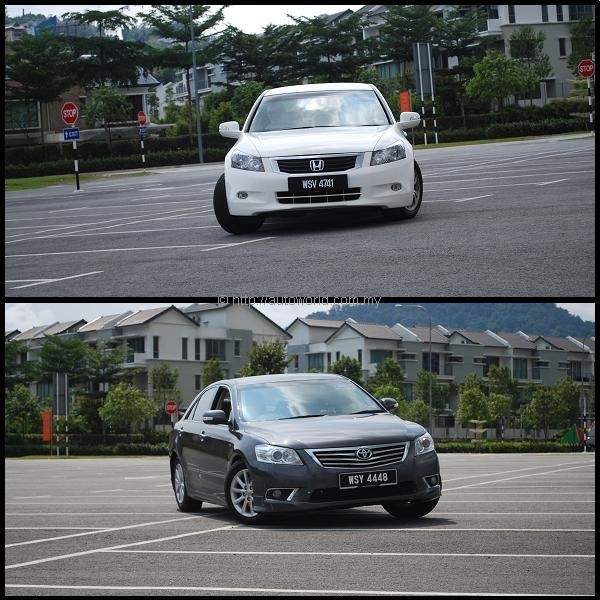 |
| Accord demonstrates superior agility to Camry in corners. |
Back on the straights, however, the differences are less conclusive, and the winner will depend on which perspective you take on. Once again, keener drivers will better appreciate the Accord’s smoother-revving powerplant. As the speedo edges deeper into triple-digit territory, the Accord’s five-speeder ensures lower cruising revs and better refinement, though it gets a little floaty past 140kph. In contrast, it’s the Camry that feels more stable and planted, even if the tacho is ticking a few more revs.
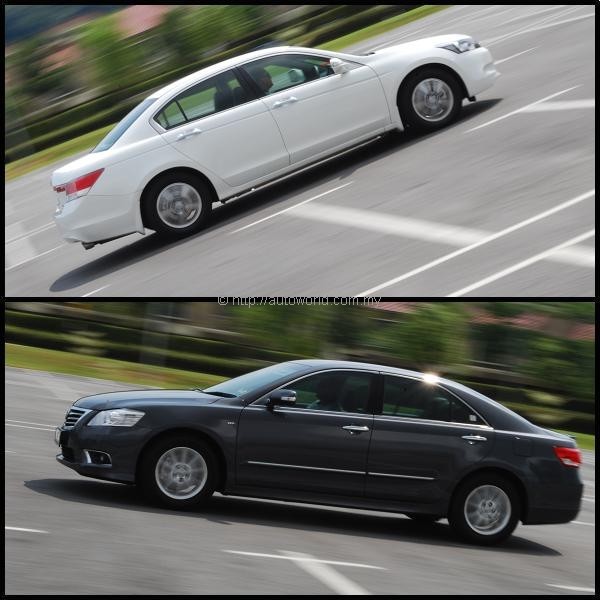 |
| Along the straights, Accord is more sprightly, but Camry has slightly better composure. |
Nevertheless, you should know that when push comes to shove, the Camry has the ability to summon the acceleration needed to match, and even beat the Accord. Using manual timing methods, I clocked (in the secret Autoworld test track at Jalan Daorhcuson) the Camry’s century dash at 11.8 seconds, just 0.1 seconds slower than the Accord.
A more shocking result followed when I timed the 80-120kph sprint with the gear lever left at ‘D’. Even though it felt more responsive and more rapid, the Accord was a full second slower for this sprint, clocking 9.6 seconds against the Camry’s 8.6. My suspicion is that the Accord’s extra second comes from it having to kickdown two gears instead of one, and also its longer ratios than the Camry.
Better acceleration times does not make the Camry a better drive. The Accord’s keener-revving engine, and superbly agile chassis ensures that it remains as the driver’s choice. Passengers, will of course better appreciate riding in the Camry with its comfort oriented chassis and classier interior. While the Accord flattens out body roll well, the Camry’s simpler suspension cushions out potholes with equal effectiveness.
The Accord is definitely the more enjoyable car to drive, but the Camry is the better choice to ferry passengers. On long highway cruises, driving the Camry also proved to be a less tiring affair.
The Verdict
Spending three days with both cars led me no closer to a satisfactory conclusion as to which of the two is the better car. Although playing in the same market segment, the polar opposite nature of their personalities means that they will always attract different crowds of supporters.
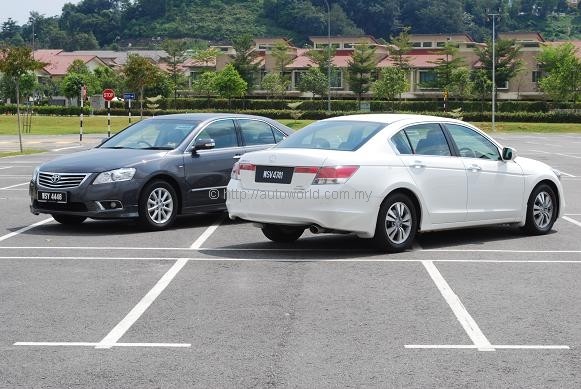 |
| Same segment, very different personalities. |
Those looking to portray a sporty and dynamic image will look closer at the Accord. Its sharper styling (16″ rims aside) already appeals better to the young and young-at-heart. That its chassis also has the ability to match the looks of its shell gives it a very strong selling point over the Camry.
Usually, such superiority pretty much guarantees the Accord a conclusive victory over the Camry. However, Toyota never engineered the Camry to be a trunk-road burner. The Camry is built around a different set of core strengths. Where it excels against the Accord is its impeccable ride comfort, and also the warmer, more welcoming ambiance of its cabin.
Deciding on which is the better car boils down to a matter of perspective. As a passenger, my preference would be to ride in the Camry, but if asked to take the wheel, I’ll go for the Accord. So, on that ground, I’m awarding the tie to the Honda Accord. It’s by no means conclusive, but someone’s gotta win.
Special thanks to: Desmond




